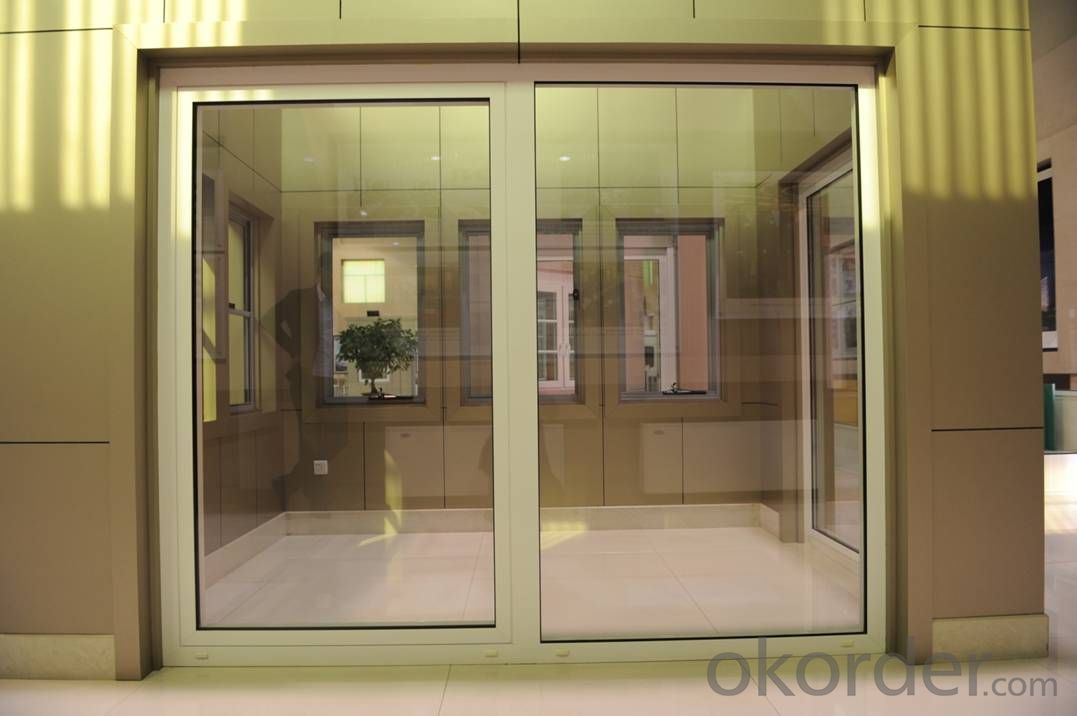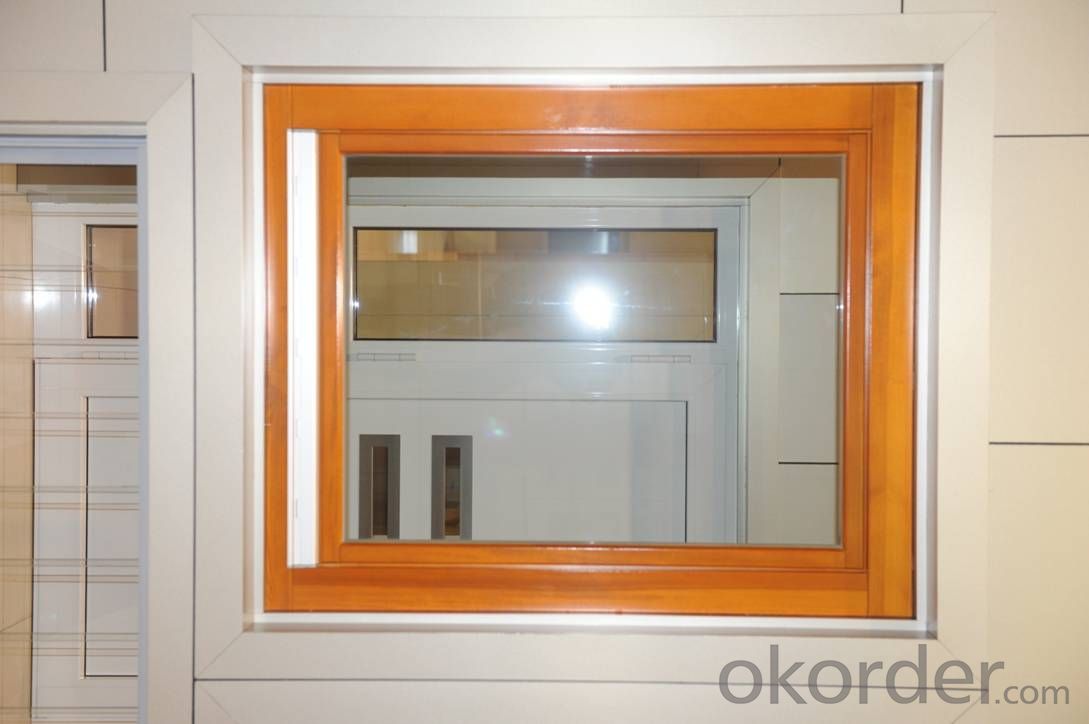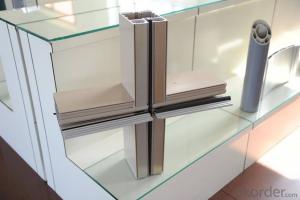Aluminum Extrusion Profiles for Windows and Doors
- Loading Port:
- Shanghai
- Payment Terms:
- TT OR LC
- Min Order Qty:
- 5 m.t.
- Supply Capability:
- 1000 m.t./month
OKorder Service Pledge
OKorder Financial Service
You Might Also Like
Item specifice
1. Structure of Aluminum Extrusion Profiles for Windows and Doors Description
Aluminum Extrusion Profiles for Windows and Doors is one semi-finished aluminium material. This coil can be rolled down to aluminium coil,sheet,circle ect. The alloy AA1050 is widly used in building, industry ect. Its weight is much lower than steel. So many customers choosed aluminium material instead of steel.
2. Specification of Aluminum Extrusion Profiles for Windows and Doors
Aluminum Extrusion Profiles for Windows and Doors | |
Main Specification | |
Alloy | AA1xxx (AA1050, AA1060, AA1070, AA1100 etc.) |
AA3xxx (AA3003, AA3004, AA3005, AA3105 etc.) | |
AA5xxx, AA6XXX (AA5052,AA5083, AA5754, AA6061, AA6062 etc.) | |
AA8xxx(AA8011, AA8006 etc.) | |
Temper | H14,H16, H18, H22, H24, H26, H32,O/F, T4, T6, T651 |
Thickmess | 0.01mm-100mm |
Width | 30mm-1700mm |
Standard | GB/T 3880-2006/ASTM |
Special specification is available on customer's requirement | |
3. Application of Aluminum Extrusion Profiles for Windows and Doors
(1).Interior: wall cladding, ceilings, bathrooms, kitchens and balconies, shutters, doors...
(2).Exterior: wall cladding, facades, roofing, canopies, tunnels,column covers , renovations...
(3).Advertisement: display platforms, signboards, fascia, shop fronts...
4. Feature of Aluminum Extrusion Profiles for Windows and Doors
Surfact Quality :
Be free from Oil Stain, Dent, Inclusion, Scratches, Stain, Oxide Dicoloration, Breaks, Corrosion, Roll Marks, Dirt Streaks and other defect which will interfere with use,
Mechenical Property:
Chemical Composite and Mechanical Property
5. Certificate of Aluminum Extrusion Profiles for Windows and Doors
SGS and ROHS(if client request, paid by client), MTC(plant provided), Certificate of Origin(FORM A, FORM E, CO), Bureau Veritas and SGS (if client request, paid by client), CIQS certificate
6. Image of Aluminum Extrusion Profiles for Windows and Doors



7. Package and shipping of Aluminum Extrusion Profiles for Windows and Doors
First, plastic cloth with drying agent inside; Second, Pearl Wool ; Third, wooden cases with dry agent , fumigation wooden pallets, aluminum surface could cover blue PVC film
8. FAQ
1) What is the delivery time?
Depends on actual order, around 20 to 35 days
2) What is the QC system:
We have QC staff of 20 persons and advanced equipment, each production is with MTC traced from Aluminum ingot lot.
3) What market do you mainly sell to?
Australia, America, Asia, Middle East, Western Europe, Africa etc
- Q:What is the HS code for aluminum profile?
- What type of aluminum? Fluorocarbon polymer sprayed aluminum profile HS Code: 7606 anodized aluminum profile, custom HS code 7604, the total is unclear
- Q:What are the weatherproofing properties of aluminum profiles?
- Aluminum profiles have excellent weatherproofing properties due to their inherent resistance to corrosion and their ability to withstand extreme weather conditions. They are highly durable and can effectively protect against moisture, UV radiation, and temperature fluctuations, making them ideal for outdoor applications. Additionally, aluminum profiles can be treated with various coatings or finishes to enhance their weather resistance even further.
- Q:How can the aluminum profile T6 and T5 be distinguished?
- Hardness is generally measured by a Brinell hardness tester. T5 is subjected to high temperature molding and air cooling quenching in the shortest possible time. The T6 is treated with solid solution after artificial aging. So there is a difference between the two. But from the appearance of it is difficult to judge, experienced hands can be used to swing aluminum, roughly judged
- Q:Can aluminum profiles be used for lighting fixtures or systems?
- Yes, aluminum profiles can be used for lighting fixtures or systems. Aluminum is a lightweight and versatile material that is commonly used in the construction of lighting fixtures due to its durability, corrosion resistance, and heat dissipation properties. Aluminum profiles can be easily fabricated into various shapes and sizes, making them suitable for different lighting applications such as recessed lighting, track lighting, pendant lighting, and more. Additionally, aluminum profiles can be anodized or coated with different finishes to enhance their aesthetic appeal and protect them from environmental elements. Overall, the use of aluminum profiles in lighting fixtures or systems allows for efficient and effective lighting solutions while maintaining a sleek and modern design.
- Q:Are there any specific cleaning and maintenance instructions for aluminum profiles?
- Yes, there are specific cleaning and maintenance instructions for aluminum profiles. Firstly, it is important to regularly dust and wipe down the aluminum profiles using a soft cloth or sponge. Avoid using abrasive materials or harsh chemicals, as they can damage the surface. For tougher stains or dirt, a mild soap solution can be used. It is crucial to rinse off any residue thoroughly and dry the profiles completely to prevent water spots. Additionally, applying a protective wax or polish can help maintain the shine and protect the aluminum from corrosion. Regular inspections should also be conducted to identify any signs of damage or wear, and necessary repairs should be addressed promptly.
- Q:Are aluminum profiles compatible with glass?
- Yes, aluminum profiles are compatible with glass. Aluminum profiles are commonly used as framing systems for glass panels in various applications such as windows, doors, curtain walls, and partitions. The compatibility arises from the fact that aluminum is lightweight, durable, and corrosion-resistant, making it an ideal material for holding and supporting glass panels. By utilizing various profile designs, aluminum frames can securely hold different types and thicknesses of glass, providing structural stability and aesthetic appeal to the overall construction. Additionally, aluminum profiles can be customized and engineered to accommodate specific glass installation requirements, ensuring a perfect fit and compatibility between the two materials.
- Q:What are the design options for aluminum profiles?
- When it comes to aluminum profiles, there are numerous design options available, offering a wide range of applications and customization possibilities. Here are some commonly used design options for aluminum profiles: 1. Various Extrusion Shapes: Aluminum profiles can be extruded into different shapes, including square, rectangular, round, T-shaped, I-shaped, or custom profiles. This shape flexibility enables designers to create profiles that perfectly match their project requirements. 2. Diverse Surface Finishes: Aluminum profiles can be finished with various surface treatments to enhance their appearance and protect them from corrosion. Popular surface finishes include anodizing, powder coating, polishing, brushing, and laminating. These finishes offer a variety of colors, textures, and levels of glossiness to suit specific design preferences. 3. T-Slot Profiles: T-slot profiles are a type of aluminum extrusion with a T-shaped slot on one or more sides. These profiles are commonly used in constructing frameworks, machine guards, and other structures that require easy assembly and reconfiguration. The T-slot design facilitates convenient insertion and adjustment of connecting elements, such as bolts, nuts, and brackets. 4. Thermal Break Profiles: Thermal break profiles are designed with a thermal barrier inserted between the interior and exterior parts of the profile. This design minimizes the transfer of heat or cold between the two sides, making them suitable for applications where thermal insulation is crucial, such as windows, doors, and curtain walls. 5. Customization Options: Aluminum profiles can be further customized through additional machining processes, such as cutting, drilling, tapping, milling, or bending. These processes allow for the creation of unique shapes, hole patterns, or features that meet specific design requirements. 6. Integration Capability: Aluminum profiles can be designed to integrate with other components or systems, such as hinges, connectors, fasteners, or brackets. This integration capability provides flexibility in assembly and enables the creation of complex structures or modular systems. In summary, the design options for aluminum profiles are extensive, offering versatility, functionality, and aesthetic appeal. Designers have the freedom to choose from a wide range of shapes, finishes, and additional features to create aluminum profiles that precisely meet their project needs.
- Q:5002 and 6063 aluminum profiles difference
- 6063 aluminum alloy main alloy elements for magnesium and silicon, with excellent processability, excellent weldability, extrusion and electroplating, good corrosion resistance, toughness, easy polishing, coating, anode oxidation effect is excellentIt is a typical extrusion alloy, widely used in building profiles, irrigation pipes, tubes, rods and profiles for vehicles, platforms, furniture, elevators, fences, etc.
- Q:How do you ensure proper electrical grounding with aluminum profiles?
- In order to achieve proper electrical grounding with aluminum profiles, it is necessary to follow a few essential steps. To begin with, it is crucial to ensure the cleanliness and freedom from dirt, dust, or oxidation of all aluminum profiles. This can be accomplished by utilizing an appropriate cleaning agent or solvent to eliminate any contaminants that may impede the grounding process. Subsequently, the utilization of conductive hardware, such as grounding clips or brackets specifically designed for aluminum profiles, can enable the attainment of proper electrical grounding. These hardware components must be securely affixed to the aluminum profiles to establish a dependable electrical connection. Moreover, establishing a robust electrical connection between the aluminum profiles and the grounding system is of utmost importance. This can be accomplished by employing copper or aluminum grounding conductors that are appropriately sized and firmly connected to both the aluminum profiles and the grounding system. Additionally, it is essential to conduct regular inspections of the grounding system to ensure its effectiveness. This may involve scrutinizing for any loose connections, indications of corrosion, or damage to the grounding conductors. Any identified issues should be promptly addressed and repaired to maintain proper electrical grounding. Lastly, it is advisable to consult with a qualified electrician or engineer who specializes in electrical grounding when dealing with aluminum profiles. They can offer specific guidance and guarantee compliance with pertinent electrical codes and standards to ensure the proper and safe grounding of the system.
- Q:What are the different tolerance levels for aluminum profiles?
- The tolerance levels for aluminum profiles can vary depending on the specific requirements and applications. Generally, aluminum profiles have tight tolerance levels due to their importance in various industries such as automotive, aerospace, and construction. The most common tolerance levels for aluminum profiles include dimensional tolerances, straightness tolerances, and surface finish tolerances. Dimensional tolerances refer to the permissible deviation from the specified measurements of the profile. These tolerances ensure that the profile meets the required dimensions and can fit properly in the intended application. The dimensional tolerances for aluminum profiles are typically specified in terms of millimeters or inches. Straightness tolerances determine the allowable deviation from a perfectly straight line for the aluminum profile. This tolerance ensures that the profile is not bent or warped, which is crucial for maintaining structural integrity and accurate assembly. Surface finish tolerances define the acceptable level of imperfections on the surface of the aluminum profile. These imperfections can include scratches, indentations, or roughness. The surface finish tolerance is typically specified in terms of roughness average (Ra) or surface quality codes, such as anodized or powder-coated finishes. It is important to note that the specific tolerance levels for aluminum profiles can vary depending on the manufacturing process, the intended application, and the industry standards. Therefore, it is essential to consult the relevant specifications, industry standards, or the supplier's guidelines to determine the precise tolerance levels for a specific aluminum profile.
1. Manufacturer Overview |
|
|---|---|
| Location | |
| Year Established | |
| Annual Output Value | |
| Main Markets | |
| Company Certifications | |
2. Manufacturer Certificates |
|
|---|---|
| a) Certification Name | |
| Range | |
| Reference | |
| Validity Period | |
3. Manufacturer Capability |
|
|---|---|
| a)Trade Capacity | |
| Nearest Port | |
| Export Percentage | |
| No.of Employees in Trade Department | |
| Language Spoken: | |
| b)Factory Information | |
| Factory Size: | |
| No. of Production Lines | |
| Contract Manufacturing | |
| Product Price Range | |
Send your message to us
Aluminum Extrusion Profiles for Windows and Doors
- Loading Port:
- Shanghai
- Payment Terms:
- TT OR LC
- Min Order Qty:
- 5 m.t.
- Supply Capability:
- 1000 m.t./month
OKorder Service Pledge
OKorder Financial Service
Similar products
New products
Hot products
Related keywords






























